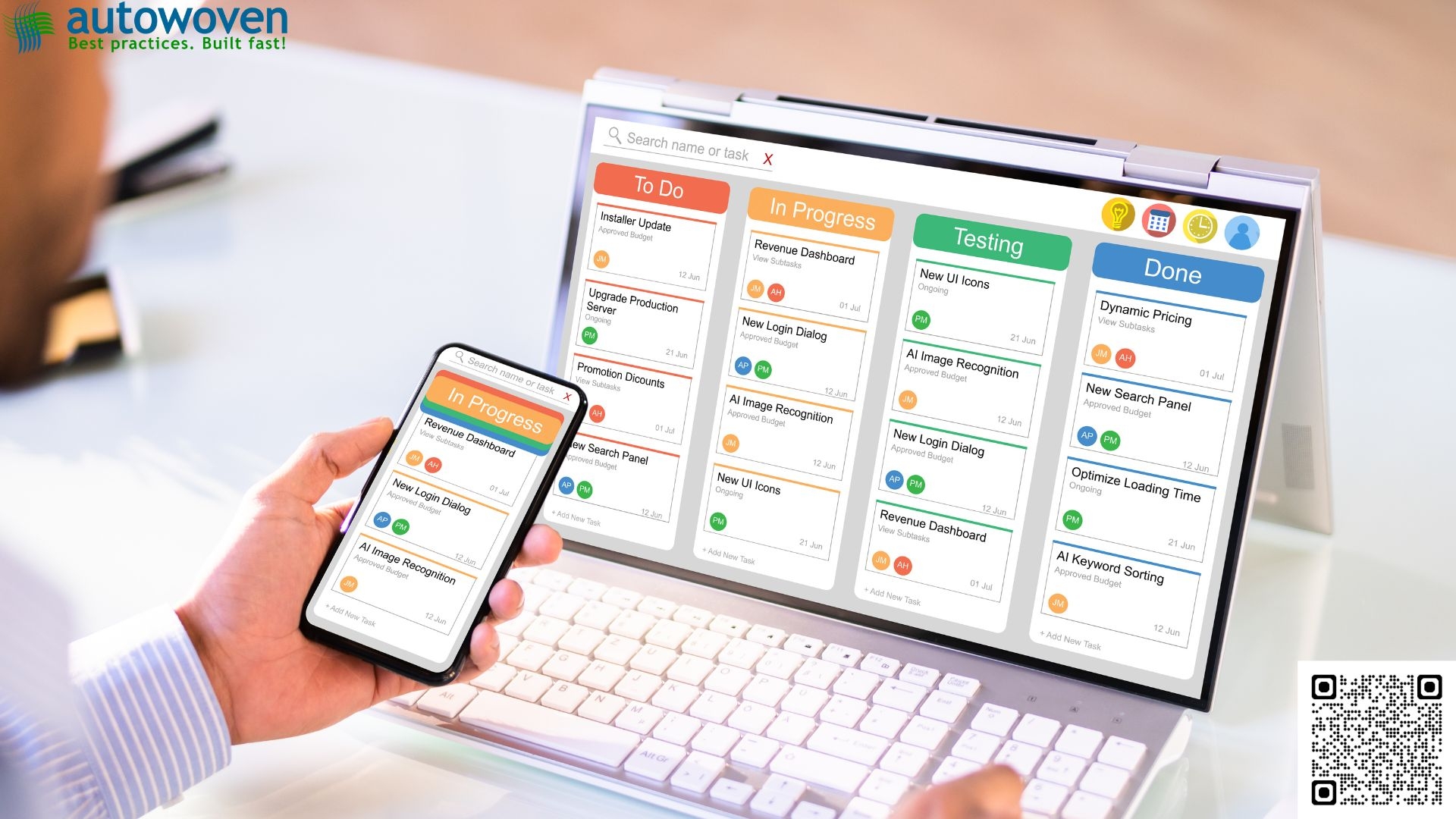

Drag-and-Drop Interface: Users can easily create forms by dragging fields into place, streamlining the design process and reducing the need for extensive training.
Another critical aspect is the ability to create multilingual forms. In a globalized economy, businesses often serve diverse populations. Whether you are at a doctor's office or purchasing a car, you may have come accross the ubiquitous "paperwork" involved. In the past, such paperwork was typically a printed form presented on a paper-pad. The paper-pads have almost disappeared at most places, but often replaced by fillable PDF forms, often presented on desktops and tablets. For several reasons, the pandemic included, organizations have sought to enhance this customer experience further with truly dynamic, digital forms. How AEM Adaptive Forms Revolutionizes User Interaction A recent study has shown that 74% of companies use web forms for lead generation, with 49.7% stating their online forms are their highest converting lead generation tools. Traditional, fillable PDF forms are one step better than paper-based forms, but still do not meet modern customer expectations. Online, web-based, responsive forms that react to user responses dynamically are the modern way of interacting with customers. Thanks to Adobe Forms application creating such a dynamic Forms experience is no longer a complex endeavor for organizations to implement.. When a US Government agency approached Autowoven, they had several challenges with Adobe Forms. They had over 500 forms that were currently in PDF format and they were in the middle of a digital transfomation proccess that seems to have no end in sight. They were a couple of years into their Adobe/ AEM Adaptive Forms license agreement, but they were still not in production with even a single online form. Autowoven worked with their Communications department to gather their true Forms automation needs - which also involved business process optimization. We developed AEM Adaptive Forms that brought consistency to their Forms, developed re-usable form fragments with validation logic and database integrations. Due to Autowoven's existing strength in the Adobe Experience Manager CMS platform - that involves users andd roles management, OSGi development experience, and AEM repository expertise, we were able to bring complex features into their Forms Automation. Our workflows integrated forms with backend HR systems, automatically generated PDF based Documents of Record and enhanced security with Adobe Sign integration. This was a big win and the customer's only regret was that they did not involve Autowoven sooner! Adobe Experience Forms: Elevating Digital Forms for Modern Businesses For organizations that want to automate form data capture and processing, Adobe® LiveCycle is a server based software that supports the use of a desktop based application called Forms Designer, a graphical design tool, to create forms that combine high-fidelity presentation with XML data handling. Simply stated, it allowed the creation of PDF forms. Adobe LiveCycle has been discontinued and is now replaced by Experience Manager Forms - which is based on the Adobe Experience Manager platform.. AEM Forms allows organizations to create forms that cater to multiple languages, ensuring inclusivity and improving accessibility for non-native speakers. This feature not only broadens the potential user base but also demonstrates an organization's commitment to meeting the needs of all customers.
Moreover, Autowoven's commitment to ongoing support and innovation ensures that clients can continuously optimize their form solutions. Regular updates and enhancements to the AEM Forms platform allow organizations to leverage the latest features and technologies, keeping them at the forefront of digital experiences. This proactive approach to management means that clients can avoid stagnation and maintain a competitive edge in their industries.
The significance of user training and support cannot be overlooked. Autowoven recognizes that successful implementation of AEM Forms goes beyond just technical capabilities. Whether you are at a doctor's office or purchasing a car, you may have come accross the ubiquitous "paperwork" involved. In the past, such paperwork was typically a printed form presented on a paper-pad. The paper-pads have almost disappeared at most places, but often replaced by fillable PDF forms, often presented on desktops and tablets. For several reasons, the pandemic included, organizations have sought to enhance this customer experience further with truly dynamic, digital forms. From Paperwork to Dynamic Forms: The Evolution of Adobe Forms A recent study has shown that 74% of companies use web forms for lead generation, with 49.7% stating their online forms are their highest converting lead generation tools. Traditional, fillable PDF forms are one step better than paper-based forms, but still do not meet modern customer expectations. Online, web-based, responsive forms that react to user responses dynamically are the modern way of interacting with customers. Thanks to Adobe Forms application creating such a dynamic Forms experience is no longer a complex endeavor for organizations to implement.. They provide comprehensive training programs for client teams, empowering them to fully leverage the platform's capabilities. This knowledge transfer ensures that organizations can maintain and enhance their forms independently, fostering a culture of continuous improvement.
Additionally, organizations can benefit from the customizable reporting capabilities within AEM Forms. By leveraging Adobe's reporting tools, businesses can generate comprehensive reports on form usage, user demographics, and conversion rates. This data is instrumental in understanding customer behavior and preferences, enabling organizations to make informed decisions regarding marketing strategies and form design.
Historically, users faced tedious and cumbersome paperwork processes, often relying on printed forms that required manual handling. The shift from paper-based forms to digital alternatives began with the introduction of fillable PDF forms, primarily utilized on desktops and tablets. However, traditional fillable PDFs still fell short of modern consumer expectations, which have evolved dramatically, especially in the wake of the pandemic. Companies have recognized the necessity for more dynamic and interactive forms that can adapt to user inputs in real time, ultimately transforming the customer interaction landscape.
Partnership with Adobe: Autowoven is a certified Adobe Solution Partner, leveraging their collaboration to deliver award-winning digital experiences.
Modern Form Design: Adobe Experience Manager Forms (formerly Adaptive Forms) allows organizations to design and host modern forms optimized for both web and mobile devices.
Shift from Paper to Digital: The transition from traditional paper forms to fillable PDFs and now dynamic web-based forms reflects a broader trend in enhancing customer experience.
Lead Generation: A significant study revealed that 74% of companies utilize web forms for lead generation, with nearly half reporting these as their most effective tools.
Dynamic User Experience: Online forms that respond dynamically to user input are essential for meeting modern customer expectations.
User-Friendly Features: AEM Forms offers a variety of user-friendly features, including drag-and-drop field creation and real-time database connectivity.
Reusable Components: The platform supports reusable fields and groups of fields (called Fragments), which streamline the form creation process.
Document Generation: AEM Forms can generate Documents of Record (DOR) in PDF format, making document management more efficient.
Brand Customization: Organizations can customize the look and feel of their forms to align with brand guidelines.
Automated Conversion: The platform includes an automated process for converting PDF forms to web-based forms.
Form Portal Deployment: AEM allows the deployment of a Form Portal, which serves as a centralized entry point for users to access all relevant forms.
Custom Workflows: Organizations can create customizable workflows to address complex business process requirements.
Historical Context: The evolution of Adobe Forms includes its origin as JetForm Design, transitioning through various versions until rebranding to Experience Forms in 2021.
Native Cloud Service: AEM Adaptive Forms is now available as a Native Cloud Service, managed by Adobe, enabling easy customer implementation of online forms.
Successful Project Examples: Autowoven successfully assisted a US Government agency in transitioning over 500 PDF forms into the AEM Forms platform, integrating advanced features and workflows.
Expertise in AEM: Autowoven’s extensive experience with Adobe Experience Manager products ensures that clients can implement solutions quickly and effectively.
Rapid Deployment: Autowoven can expedite the rollout of form portals and related solutions, thanks to their experience and best practices.
OSGi Development: The platform allows for easy migration from older Adobe LiveCycle implementations to the AEM Forms OSGi platform.
Integration Capabilities: AEM Forms supports integration with other Adobe services like AEM Assets, AEM Sites, and Adobe Sign for comprehensive document management.
FAQs Addressing Common Questions: The content addresses common inquiries about Adobe LiveCycle, Forms Designer, XDP files, and the differences between cloud and on-premise AEM Forms solutions.

After nearly 50 years of failed attempts, the Borough and Township of Princeton successfully merged into a single municipality following a 2011 referendum. The merger, effective January 1, 2013, aims to streamline services and reduce costs.
Posted by on

Princeton is situated in New Jersey's 12th Congressional District and the 16th state legislative district, represented by key Democratic leaders at both state and federal levels. The county's governance is led by a County Executive and a Board of County Commissioners.
Posted by on

Princeton is home to several prestigious educational institutions, including Princeton University and Princeton Theological Seminary. The region features notable academic facilities, though recent developments have sparked community concern regarding the future of Westminster Choir College.
Posted by on

Princeton's public education system serves students from pre-kindergarten through high school, featuring notable institutions like Princeton High School and various elementary schools. The district boasts impressive enrollment figures and student-teacher ratios, along with a charter school and vocational opportunities for high school students.
Posted by on

Princeton boasts a well-developed transportation infrastructure, including an extensive network of roads and highways, public transit options like the "Dinky" train service, and access to regional airports. The borough maintains over 126 miles of roadways, ensuring connectivity to major cities and nearby transportation hubs.
Posted by on
Moreover, organizations can implement conditional logic within AEM Forms, allowing for personalized user experiences. For instance, forms can change dynamically based on user input, presenting relevant fields based on previous answers. This not only improves user experience but also ensures that organizations collect the precise information they require, thereby enhancing the quality of the data gathered.
Dynamic Field Adjustments: The platform automatically adjusts field sizes based on the screen width, ensuring a consistent user experience across various devices.
Brand Customization: Organizations can customize the look and feel of forms to align with their brand guidelines, enhancing brand recognition and user trust.
When a US Government agency approached Autowoven, they had several challenges with Adobe Forms. They had over 500 forms that were currently in PDF format and they were in the middle of a digital transfomation proccess that seems to have no end in sight. They were a couple of years into their Adobe/ AEM Adaptive Forms license agreement, but they were still not in production with even a single online form. Autowoven worked with their Communications department to gather their true Forms automation needs - which also involved business process optimization. We developed AEM Adaptive Forms that brought consistency to their Forms, developed re-usable form fragments with validation logic and database integrations. Due to Autowoven's existing strength in the Adobe Experience Manager CMS platform - that involves users andd roles management, OSGi development experience, and AEM repository expertise, we were able to bring complex features into their Forms Automation. Our workflows integrated forms with backend HR systems, automatically generated PDF based Documents of Record and enhanced security with Adobe Sign integration. This was a big win and the customer's only regret was that they did not involve Autowoven sooner! AEM Forms: Empowering Digital Transformations Across Industries For organizations that want to automate form data capture and processing, Adobe® LiveCycle is a server based software that supports the use of a desktop based application called Forms Designer, a graphical design tool, to create forms that combine high-fidelity presentation with XML data handling. Simply stated, it allowed the creation of PDF forms. Adobe LiveCycle has been discontinued and is now replaced by Experience Manager Forms - which is based on the Adobe Experience Manager platform..
Additionally, community support and resources provided by Adobe, such as forums, user groups, and documentation, further enhance the user experience. When a US Government agency approached Autowoven, they had several challenges with Adobe Forms. They had over 500 forms that were currently in PDF format and they were in the middle of a digital transfomation proccess that seems to have no end in sight. They were a couple of years into their Adobe/ AEM Adaptive Forms license agreement, but they were still not in production with even a single online form. Autowoven worked with their Communications department to gather their true Forms automation needs - which also involved business process optimization. We developed AEM Adaptive Forms that brought consistency to their Forms, developed re-usable form fragments with validation logic and database integrations. Due to Autowoven's existing strength in the Adobe Experience Manager CMS platform - that involves users andd roles management, OSGi development experience, and AEM repository expertise, we were able to bring complex features into their Forms Automation. Our workflows integrated forms with backend HR systems, automatically generated PDF based Documents of Record and enhanced security with Adobe Sign integration. This was a big win and the customer's only regret was that they did not involve Autowoven sooner! The Role of Adobe Experience Manager in Modern Form Solutions For organizations that want to automate form data capture and processing, Adobe® LiveCycle is a server based software that supports the use of a desktop based application called Forms Designer, a graphical design tool, to create forms that combine high-fidelity presentation with XML data handling. Simply stated, it allowed the creation of PDF forms. Adobe LiveCycle has been discontinued and is now replaced by Experience Manager Forms - which is based on the Adobe Experience Manager platform.. Engaging with the broader Adobe community can provide valuable insights, tips, and best practices, facilitating knowledge sharing among users facing similar challenges.
Finally, organizations that successfully implement AEM Forms often find that their overall digital transformation efforts are significantly enhanced. The insights gained from form data can drive broader business decisions, from marketing strategies to product development. By harnessing the power of data collected through AEM Forms, organizations can gain a deeper understanding of their customers' needs and preferences, leading to more informed decision-making and improved business performance.
Furthermore, the ongoing evolution of Adobe Experience Manager Forms positions it as a future-ready solution. Adobe's commitment to integrating emerging technologies, such as artificial intelligence and machine learning, means organizations can expect continuous improvements that align with changing market dynamics. For instance, AI could be utilized to analyze past form interactions and optimize user journeys in real-time, tailoring the form experience to individual user needs.
Ultimately, Adobe Experience Manager Forms, with its rich features and capabilities, represents a vital component of modern digital transformation strategies. By embracing this powerful tool, organizations can enhance user experiences, streamline processes, and drive efficiencies that contribute to long-term success. Partnering with experts like Autowoven further amplifies these benefits, ensuring that businesses are well-equipped to navigate the complexities of digital form management and leverage their full potential.
In addition to these features, organizations benefit from the seamless integration of Adobe Sign within AEM Forms, which simplifies the signing process for both businesses and customers. With this integration, users can complete forms and electronically sign documents in a single workflow, streamlining processes that typically require multiple steps. This not only enhances user convenience but also accelerates the overall turnaround time for critical transactions, such as contracts and agreements. Whether you are at a doctor's office or purchasing a car, you may have come accross the ubiquitous "paperwork" involved. In the past, such paperwork was typically a printed form presented on a paper-pad. The paper-pads have almost disappeared at most places, but often replaced by fillable PDF forms, often presented on desktops and tablets. For several reasons, the pandemic included, organizations have sought to enhance this customer experience further with truly dynamic, digital forms. Autowoven’s Success with Adobe AEM Forms Implementation A recent study has shown that 74% of companies use web forms for lead generation, with 49.7% stating their online forms are their highest converting lead generation tools. Traditional, fillable PDF forms are one step better than paper-based forms, but still do not meet modern customer expectations. Online, web-based, responsive forms that react to user responses dynamically are the modern way of interacting with customers. Thanks to Adobe Forms application creating such a dynamic Forms experience is no longer a complex endeavor for organizations to implement.. The ability to capture digital signatures securely and efficiently is essential for organizations looking to improve compliance and reduce the risks associated with paper-based documentation.
Real-Time Database Integration: Organizations can connect forms to databases in real time, enabling the seamless saving and retrieval of data as users fill out forms.


As organizations continue to seek advanced digital solutions, the integration of Adobe Forms within the broader Adobe Experience Cloud ecosystem becomes essential. This holistic approach allows for optimized data handling and user engagement, thereby driving better business outcomes and enhancing overall customer satisfaction.
In summary, Adobe Experience Forms (AEM Forms) not only streamlines form creation and management but also offers organizations the tools to adapt to changing consumer expectations, ultimately paving the way for enhanced digital experiences. Through partnerships with experienced solution providers like Autowoven, organizations can leverage these advanced capabilities to transform their operations and elevate their digital presence.
In terms of scalability, AEM Forms is designed to grow alongside an organization's needs. As businesses expand, they can easily adapt their forms and workflows without needing to overhaul their existing systems. This flexibility is crucial for organizations that may need to adjust their operations in response to evolving market demands or regulatory changes.
As companies navigate their digital transformation journeys, the role of forms should not be underestimated. They are often the first point of interaction between an organization and its customers, setting the tone for the overall experience. Therefore, investing in an advanced form solution like AEM Forms is not just a technical decision; it's a strategic one that can significantly impact customer satisfaction and business outcomes.
Recent research highlights that a staggering 74% of businesses leverage web forms for lead generation, with nearly 50% identifying these online forms as their most effective tools for conversion. Recognizing this trend, Adobe's AEM Forms provides organizations with the capability to create, manage, host, and collect user data efficiently and effectively. This platform simplifies the process of developing forms that meet contemporary digital standards.
The support from Autowoven as an Adobe Certified Partner plays a vital role in this adaptability. With over a decade of experience, Autowoven brings industry best practices to the table, ensuring that clients can implement and scale their solutions effectively. They offer ongoing support and consultation, which empowers organizations to navigate the complexities of Adobe's tools and leverage new features as they become available. This is particularly important as Adobe continues to innovate and enhance its product offerings.

Full-stack application development involves creating both the front-end and back-end of web applications, allowing for complete control over the development process.
OpenText provides a robust web content management system that Autowoven utilizes to create scalable and efficient digital marketing solutions.
Autowoven serves a variety of clients, including Fortune 500 companies, providing strategic solutions and digital experiences.